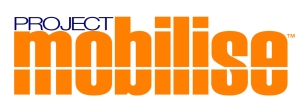Guest Speaker: John Eyles from Project Mobilise
What a delightful afternoon discussion we have just had with John Eyles from Project Mobilise.
He is a specialist in e-learning and m-learning (mobile learning), and he came to meet with a group of tutors at WITT who are interested in developing those techniques for their classrooms.
Here are some links to projects he works on:
John talked about how classroom learning is like a meal; everything is carefully considered and prepared for the diner (student), and it should leave you wanting dessert! E-learning is like a banquet; traditionally there is lots on offer, and the hungry diner can pick at what they are ravenous for – although there is no-one there to guide them on which wine they should choose, for instance. M-learning is more like a powerbar – it’s a highly concentrated chunk of learning full of carbs and nutrients. What a cool metaphor! He also explained how he doesn’t see one method as being better than the others, and that ideally the teacher should use an appropriate combination of the three.
The discussion was mostly informal, although John gave it structure by getting us all to do some “work” by writing down the positive achievements we have already made in our teaching, specifically related to e-learning or m-learning. Later, we were asked to write down our ideas on how where we would like teaching at WITT to be in the future, and then we discussed the reasons/impediments for the gap between the two different states, here and the future.
One thing that really got us excited was EDUPOV (educational point of view); John showed us some prototype sunglasses which had been modified with a small camera sitting in between the eyes on the bridge of the glasses, a little streaming transmitter on one of the wings, and two biometric sensors at the end of each arm. The idea behind this arrangement is that the glasses sit on a charging dock when not in use. Once the teacher picks them up and puts them on, the biometric sensors recognise who it is, and with the help of a cellphone clipped to the teacher’s belt, they know where they are using GPS, and what time it is. The example John Eyles gave was of an automotive tutor, showing a class how to work under the engine of a car. This tutor would slip the glasses on, scoot under the car and wherever he looked, the video captured would be bluetoothed straight back to a screen or projector for the students to watch. (Of course, a mic must have been part of this arrangement too). Not only that, the streaming video data would also be sent to the cloud using Streamfolio, so it could be stored, then easily accessed and downloaded to mobile devices by each of the students when they need it.
Obviously this is very cool, and as the cost of the gear is not too high, (NZD $300 approx for the specs), it’s not completely beyond our expectations. The other awesome thing is that with the time and geo-location stamp, the tutor now has absolute proof of having taught a particular subject at that time and place. Like. Like very much. 🙂
We also talked about blogging, game based learning, blended learning experiences we had, how to fill the space between the classroom and home, how fast retention rates for learning drops away, overlay-environments such which allow the virtual and real worlds to be combined, teachnig in Second Life virtual world and how it can be better than other forms of distance communication, and many more things that I can’t remember.
If you were there, what else do you remember? Post it in the comments 🙂








